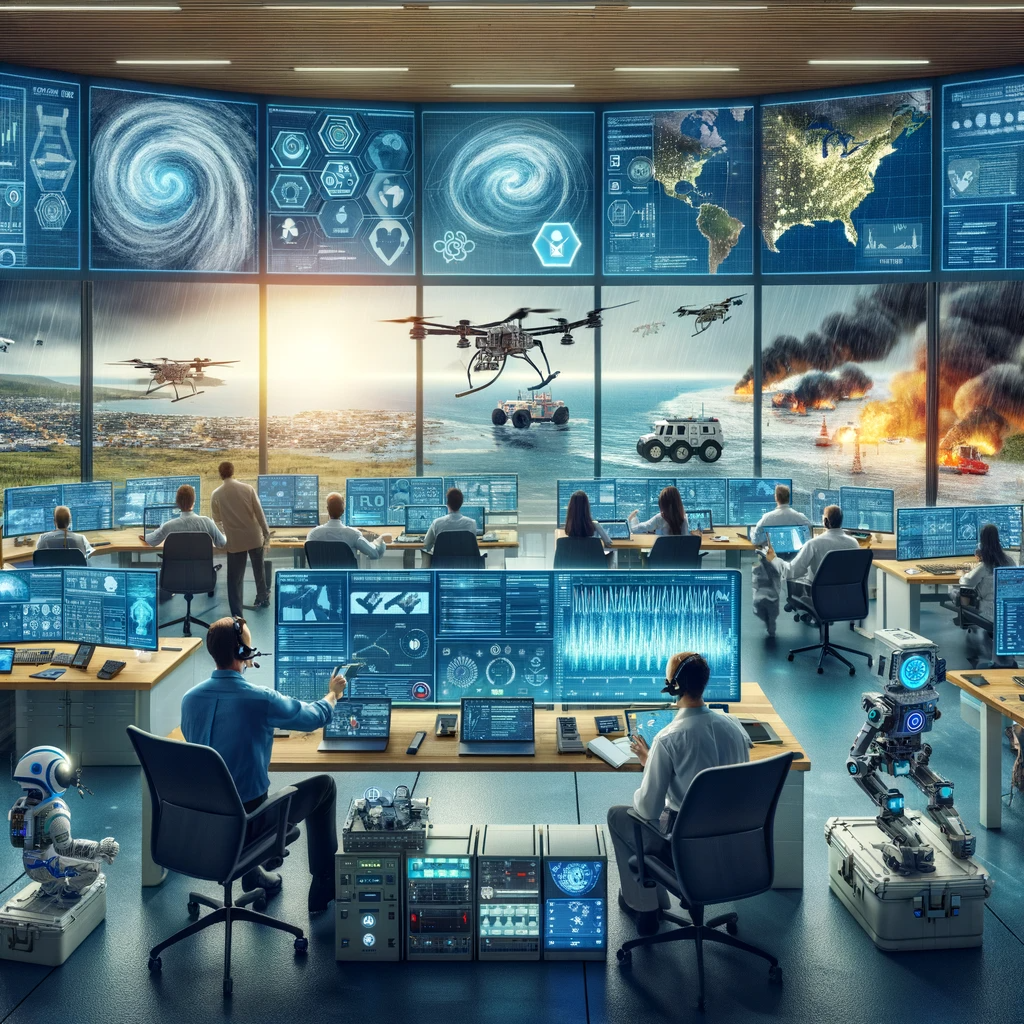The Role of Technology in Natural Disaster Response
In a world where natural disasters like earthquakes, floods, hurricanes, and wildfires are becoming increasingly frequent and devastating, the role of technology in disaster management and response has never been more critical. With advancements in various technologies, including Geographic Information System (GIS), satellite remote sensing, real-time communication technologies, and predictive analytics, the way we respond to disasters is changing rapidly. This article explores the vital role that technology plays in every phase of disaster management and response, from preparedness to recovery.

Preparedness Phase:
Technology has transformed disaster preparedness by providing access to timely and accurate information. Geographic Information System (GIS) technology helps in identifying risk areas, hazardous zones, and weather patterns. It enables emergency managers to develop long-term planning strategies, mobilize resources, and develop mutual trust with affected communities. Real-time weather data and predictive analytics assist in timely evacuation and resource allocation, reducing the impact of disasters.
Response Phase:
During the immediate aftermath of a disaster, technology is a lifeline for first responders and affected communities. Satellite remote sensing data and GIS technology provide critical information about the extent of damage and the location of disaster victims. Communication technologies enable emergency services to coordinate search and rescue operations efficiently. Social media platforms and short message services (SMS) help communicate with citizens, disseminating critical information about evacuation routes, emergency shelters, and actions to prevent further harm.
Recovery Phase:
Technology’s impact extends to the recovery phase as well. It plays a significant role in rebuilding infrastructure, restoring normalcy, and supporting post-disaster recovery efforts. Satellite imagery helps assess damage to buildings and infrastructure, aiding insurance policies and post-disaster assessments. GIS technology assists in identifying priority areas for rebuilding and resource allocation. Remote sensing data is crucial in monitoring environmental changes in the wake of a disaster, helping communities mitigate future risks.
Changing the Way We Respond:
Technology is changing the way we respond to disasters fundamentally. In the past, emergency managers relied on limited information, often leading to delayed responses and inefficient resource allocation. Today, real-time data and information technologies provide actionable insights to respond effectively to disasters promptly. Information dissemination to citizens is faster and more precise, reducing panic and ensuring safety.
Role in Disaster Management Cycle:
Throughout the disaster management cycle, technology plays a critical role in disaster mitigation, preparedness, response, and recovery. It has become an indispensable tool for emergency managers and response teams. The frequency of natural disasters, including wildfires and hurricanes, has increased in recent years, making technology’s role even more crucial.
Satellite Technology and Starlink:
Satellite technology, particularly the Starlink project, has revolutionized disaster response. Starlink’s satellite internet service provides connectivity to remote and disaster-stricken areas, ensuring that even the most isolated communities can access emergency services and vital information during times of crisis. This technology has been especially crucial during the COVID-19 pandemic, where remote areas needed access to healthcare and critical information.
Best Practices and Future Prospects:
As technology continues to evolve, it is essential for emergency managers and communities to adopt best practices in integrating technology into disaster management strategies. Regular training and drills should be conducted to ensure that responders are well-versed in the use of technology. In the future, we can expect technology to play an even more significant role in disaster management, with advancements in artificial intelligence, machine learning, and the use of satellite constellations like Starlink.
In conclusion, technology has transformed disaster management and response, playing a vital role in mitigating the impact of disasters, saving lives, and aiding in the recovery process. From GIS technology to satellite remote sensing, from real-time communication to the Starlink project, technology has become an indispensable tool in the hands of first responders, emergency managers, and affected communities. Embracing and optimizing technology’s potential will continue to be crucial as we face an increasingly uncertain world with a higher frequency of natural disasters.
